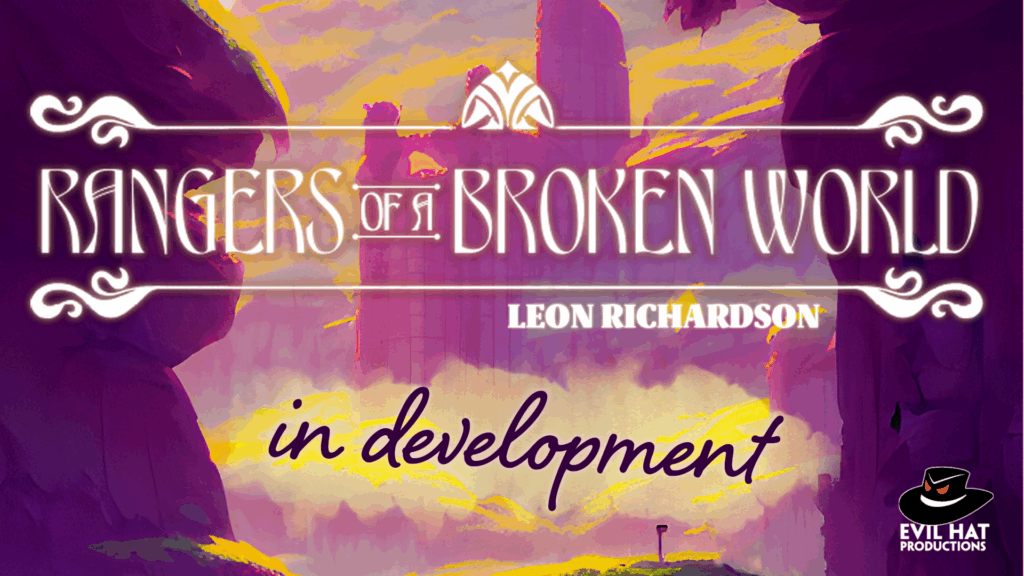Welcome to the first (of many to come) in a series of Design Diaries for Rangers of a Broken World by the creator Leon Richardson:

…
I was listening to a podcast (Dan Carlin’s excellent Hardcore History) late one night, back when I was working graveyard shift surveillance. The host mentioned the munitions still buried in the battlefields of the World Wars, and the efforts still being made, decades later, to safely unearth them. Entranced by the idea, I immediately looked up picture after picture of bombs, barbed wire, and the other trappings of war entombed in lush grass and moss. I saw fences around beautiful fields, adorned with warning signs about explosive material.
The photos were beautiful, but frightening and a little sad as well. There was something haunting about those images that wouldn’t leave my mind – the notion of a world after war, where danger remains even in peacetime, took root in my heart.
I decided to write a game about this world, where war was over but not gone yet, and where brave people journeyed into the abandoned battlefields to make them safe again.
This would become Amylte, the world of Rangers.
Because I wanted the characters to be like those real-life people on those real battlefields, I decided that facing dangerous environments would be one of the core themes. That also resonated with me culturally – Canadian literature and culture is very concerned with landscape, with place, with environment. This would be a game about humanity’s place in the world, about our relationship with nature, and about our role in helping the world heal.
The funny thing is, I don’t typically like post-apocalyptic themes. Before writing Rangers of a Broken World, they always made me anxious and depressed, so I tended to avoid them! But I was so inspired by the efforts to reclaim the ancient battlefields that before I knew it, I was writing this post-apocalyptic setting; I decided on the flood of silt to emphasize the buried dangers, and to leave room for beautiful, verdant landscapes to spring up in the aftermath. I decided that this world had been through its Last War, and that the main conflict wouldn’t be other people, but the scars of this war.
The name “Amylte” is Old English – it’s the first person future tense of the verb “to melt”. Something like “I will melt”.
Then, came the Deiliths. They came from an old game design idea I’d had and discarded a long time ago, a magic system based on proximity to certain sacred places. Now, with this game’s themes of facing danger and exploring the natural world, divine landmarks made perfect sense. I gave them names that would fit in one of my favorite games, Xenoblade Chronicles – that’s why they have two-part names like Enduring Gaius or Windswept Tomyris!
Whenever there is a sacred place, a fixed location with holy significance, people make pilgrimage. This was the realization that brought me to the Rangers – people who had already made one incredibly dangerous journey in their lives.
I like to ask myself what makes the player characters special in my games, what their relationship to the world is. In this world, in Amylte, the answer was that the heroes are adventurers, people who know how to move in the wild places of the world.
From this point on, the character classes were intertwined with the map-making. I wanted a character built to survive the tundra, so I wanted a tundra. I wanted a seafaring character, so I made coasts and archipelagos. Amylte was built around the backstories that the players could choose, around the difficult places their characters could know and understand and survive.
I hope you enjoy your adventures in Amylte! The world was made for you to explore.
